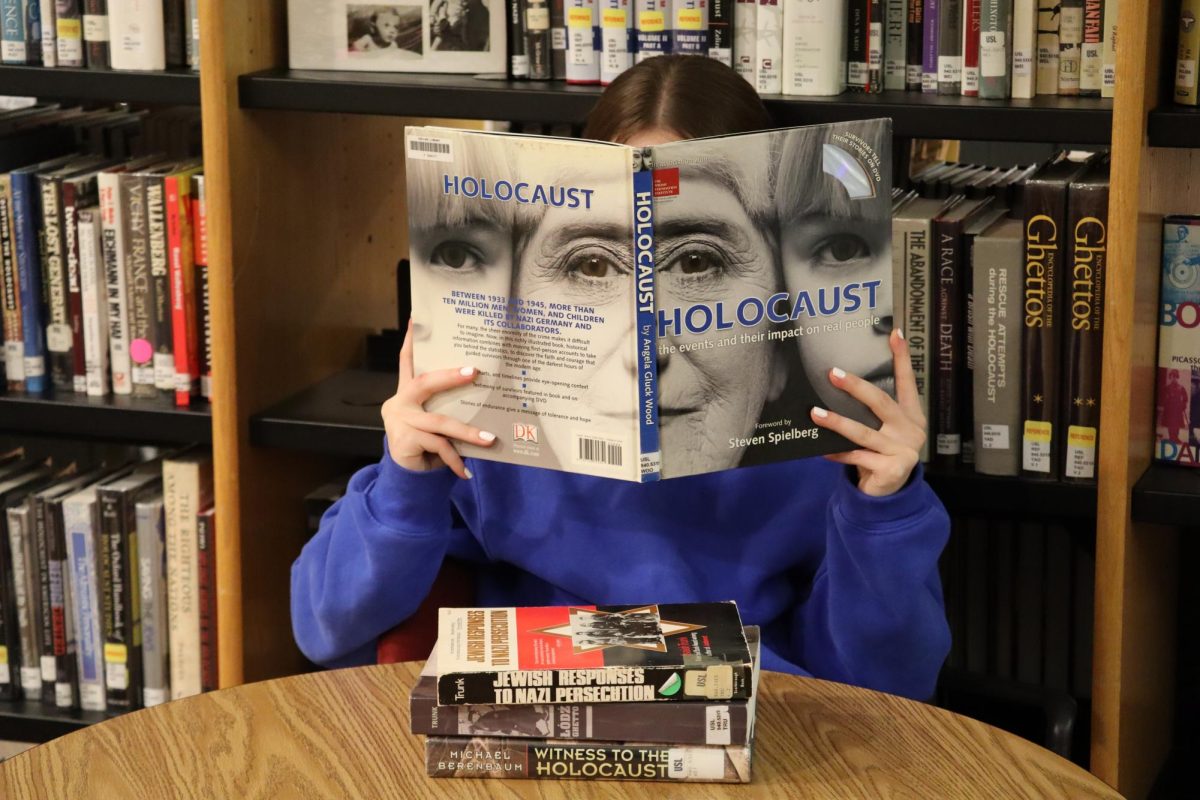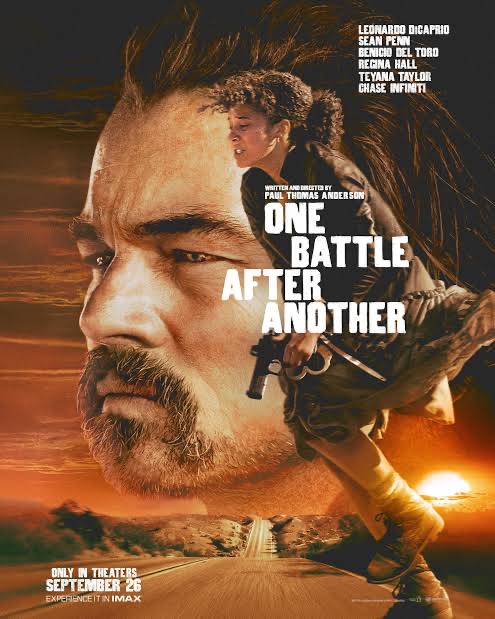A powerful resistance group, a secret high society of racists, an affair, bounty hunters, and a goofy stoner dad played by Leonardo DiCaprio—these may not seem like factors that usually coexist within a single film. Still, Paul Thomas Anderson’s newest film, One Battle After Another, manages to do wonders with these compelling concepts.
The film is divided into two large sections. The first act follows Leonardo DiCaprio’s character, Bob Ferguson, and the story of how the revolutionary group he and his wife were part of—the French 75—fell apart. The second and third acts follow Ferguson 16 years later as he tries to parent his and his estranged wife’s teenage daughter, while enemies from their past return to pull them back into the life he thought he had left behind.
The first act of One Battle After Another might lead viewers to believe they are watching a political drama about a group of revolutionaries and a military commanding officer who fetishizes their leader. However, after an unexpected time jump, both the tone and plot of the film undergo drastic changes. Following the jump, the film becomes more of a wacky adventure filled with goofy side characters and less depth. While the comedic tone of the second act is where the film truly stands out, the concepts introduced in the first act are among its most interesting aspects. Fans of comedy may prefer the latter two-thirds of the film, but those who favor a darker, more mature tone with topical themes may lose interest after the first 45 minutes.
One Battle After Another has a runtime of 2 hours and 50 minutes, allowing for plenty to be packed into the plot. From the lengthy prologue to the numerous minor story points used to develop characters, the film is filled to the brim with story beats and does not give viewers any time to breathe.
The large number of plot points leads to pacing issues and a feeling of overstuffing, which causes some important aspects of the story to be underdeveloped and may pull the audience out of the film. The main antagonist, Steven Lockjaw, is the worst offender. He is one of the most interesting characters in the prologue, but his motivations and intentions are lost later in the film, making it difficult for some viewers to connect with the story.
The pacing issues in the film stem less from the number of plot points and more from the way these story beats are distributed. The first act follows a completely different story from the rest of the film, so all aspects relating to the post-time-jump story have to be built in the following two acts of the film. The third act lacks development and feels like an empty set piece designed for the sake of having a big third-act conflict. This leads to all major developments being stuffed into the middle of the film, making the third act feel pointless and empty.
The highlights of the film are Leonardo DiCaprio and Benicio Del Toro as Bob Ferguson and Willa’s karate instructor, Sergio St. Carlos. DiCaprio and Del Toro possess so much natural chemistry that, even when given the most chaotic and outlandish prompts, they manage to deliver with sincerity, humor, and grace.
Another standout performance in the film is Chase Infiniti as Willa Ferguson. Her relationship with her father is the source of much of the film’s natural yet mundane humor. She brings a youthful, sharp comedy to the role, not only in her performance but also in the way she interacts with DiCaprio. The two often seem tired of putting up with each other, as two people would after nearly 16 years of being constantly in hiding together.
DiCaprio’s performance as Bob is one of the best of 2025. He perfectly captures the character of a broken man using drugs to cover his turmoil, while also highlighting his deeply flawed and depressing nature. He tries hard to protect Willa from high school boys, but when dangers from his past resurface, he is unable to keep her safe, leading to their separation for most of the film. Willa’s own identity crisis is sparked by previously unknown information coming to light, and Infiniti delivers the film’s best performance in a single scene.
Bob and his wife’s relationship is only shown briefly in the prologue, but in what little we see of it, the two seem to be a match made in heaven—until their daughter comes around, and the toxic nature of their relationship reveals itself.
One Battle After Another is chaotic, comedic, and captivating in ways that blend both the comedy and action-adventure genres, with plenty of twisted elements. Many plot points get lost in the sprawling story, but it doesn’t detract too much from the viewing experience. Some may see the mix of two different genres as a bold move, but Paul Thomas Anderson makes it work. Whether you like it or not, One Battle After Another is a film that’s definitely memorable.
This story was originally published on Lakewood Times on October 7, 2025.





































